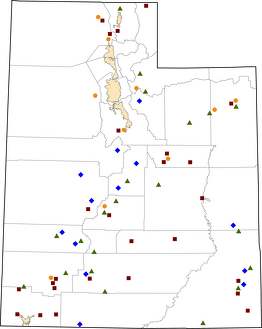Utah
State Office of Rural Health
Utah Office of Primary Care and Rural Health
Phone: 801.231.3044
Email: opcrh@utah.gov
view details
Utah Nonmetro Population
3,331,187
Estimated population
401,587
(12.1%)
People living in nonmetro areas
Utah Rural Healthcare Facilities
13
Critical Access Hospitals
0
Rural Emergency Hospitals
21
Rural Health Clinics
26
Federally Qualified Health Centers*
10
Short Term/PPS Hospitals*
*Sites according to data.HRSA.gov (July 2025), showing only locations outside of
U.S. Census
Bureau Urban Areas with a population of 50,000 or more
Last Updated: 9/11/2025
Last Reviewed: 12/29/2023



Selected Social Determinants of Health for Rural Utah